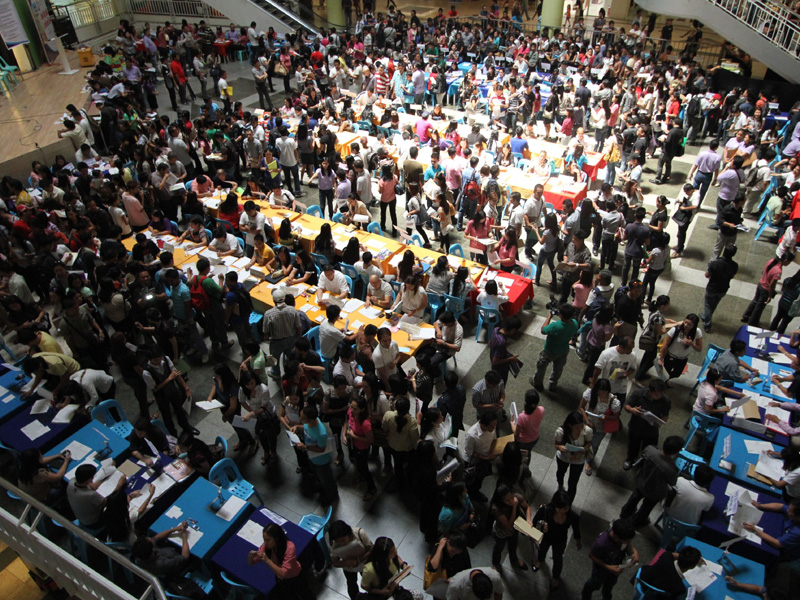Unemployment in the country worsened in January in what the government blamed on recent natural disasters that disrupted business activities in the provinces.
The unemployment rate inched up to 7.5 percent in January from 7.1 percent in the same month last year, the Philippine Statistics Authority (PSA) reported yesterday. This translated to about 2.96 million jobless Filipinos out of the 39.41 million members of the labor force.
The increase in the proportion of Filipinos out of work was consistent with earlier projections, which were based on the destruction of public infrastructure and private assets resulting from an earthquake and a supertyphoon that hit the Visayas last year.
A 7.2-magnitude earthquake struck Cebu, Bohol and neighboring provinces in October while Supertyphoon “Yolanda” devastated central Philippines in November.
“The January result of the Labor Force Survey is quite unique in that it comes in the aftermath of two extreme disasters in 2013,” said Economic Planning Secretary Arsenio Balisacan, who is also director general of the National Economic and Development Authority (Neda).
Balisacan said tourism and the leisure and wellness sectors were some of the those most heavily affected by the disasters as far as employment was concerned.
The PSA also reported that the underemployment rate improved to 19.5 percent in January from 20.9 percent in the same month last year. Underemployed individuals are people who have jobs but desire additional work hours due to various reasons, including insufficiency of income from existing jobs.
Although the underemployment rate was still high, the Neda said the decline was an indication that the quality of existing jobs was improving.
Out of the employed individuals, 62.2 percent were full-time workers (those who work for at least 40 hours a week), while the rest were working on a part-time basis.
In terms of class of workers, salary and wage workers were the biggest, accounting for 57.5 percent of the employed individuals. They were followed by self-employed individuals without paid workers who accounted for 28.5 percent of the total employed. Individuals who run their own business or run family farms accounted for 13.9 percent, while unpaid family workers made up 10.6 percent of the employed individuals in the country.
Among all business sectors, the services sector was the biggest provider of jobs in the country, accounting for 54.1 percent of total employment. The agriculture and the industry sectors accounted for 30 percent and 15.9 percent, respectively, of the country’s jobs.
Originally posted: 1:57 pm | Tuesday, March 11th, 2014
RELATED STORIES
Aquino on rise in joblessness: What went wrong?
